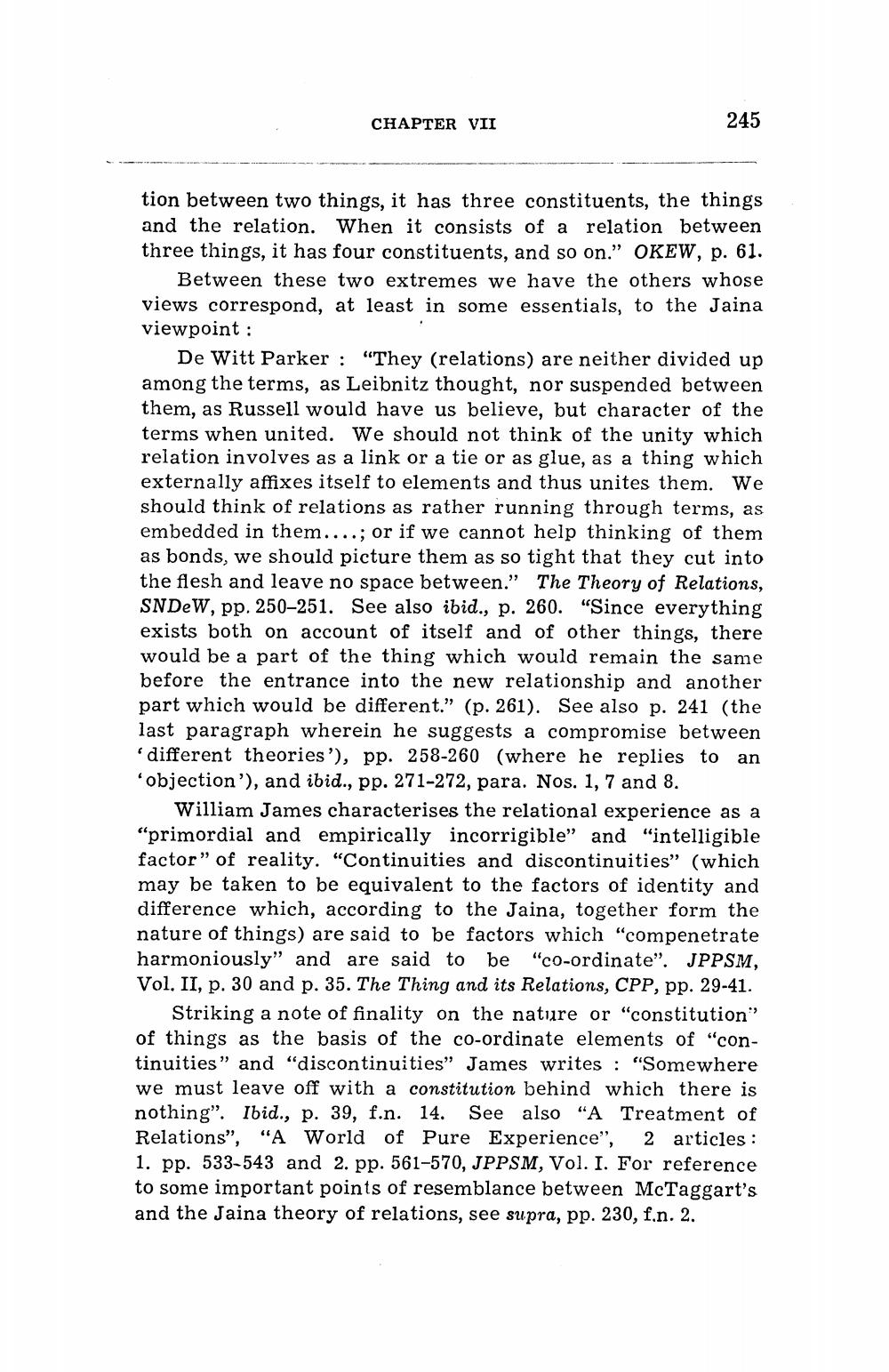________________
CHAPTER VII
245
tion between two things, it has three constituents, the things and the relation. When it consists of a relation between three things, it has four constituents, and so on." OKEW, p. 61.
Between these two extremes we have the others whose views correspond, at least in some essentials, to the Jaina viewpoint:
De Witt Parker: "They (relations) are neither divided up among the terms, as Leibnitz thought, nor suspended between them, as Russell would have us believe, but character of the terms when united. We should not think of the unity which relation involves as a link or a tie or as glue, as a thing which externally affixes itself to elements and thus unites them. We should think of relations as rather running through terms, as embedded in them....; or if we cannot help thinking of them as bonds, we should picture them as so tight that they cut into the flesh and leave no space between." The Theory of Relations, SNDeW, pp. 250-251. See also ibid., p. 260. "Since everything exists both on account of itself and of other things, there would be a part of the thing which would remain the same before the entrance into the new relationship and another part which would be different." (p. 261). See also p. 241 (the last paragraph wherein he suggests a compromise between
different theories'), pp. 258-260 (where he replies to an 'objection'), and ibid., pp. 271-272, para. Nos. 1, 7 and 8.
William James characterises the relational experience as a "primordial and empirically incorrigible" and "intelligible factor" of reality. "Continuities and discontinuities" (which may be taken to be equivalent to the factors of identity and difference which, according to the Jaina, together form the nature of things) are said to be factors which "compenetrate harmoniously" and are said to be "co-ordinate". JPPSM, Vol. II, p. 30 and p. 35. The Thing and its Relations, CPP, pp. 29-41.
Striking a note of finality on the nature or "constitution" of things as the basis of the co-ordinate elements of "continuities" and "discontinuities" James writes : "Somewhere we must leave off with a constitution behind which there is nothing". Ibid., p. 39, f.n. 14. See also "A Treatment of Relations”, “A World of Pure Experience", 2 articles : 1. pp. 533-543 and 2. pp. 561-570, JPPSM, Vol. I. For reference to some important points of resemblance between McTaggart's and the Jaina theory of relations, see supra, pp. 230, f.n. 2.




